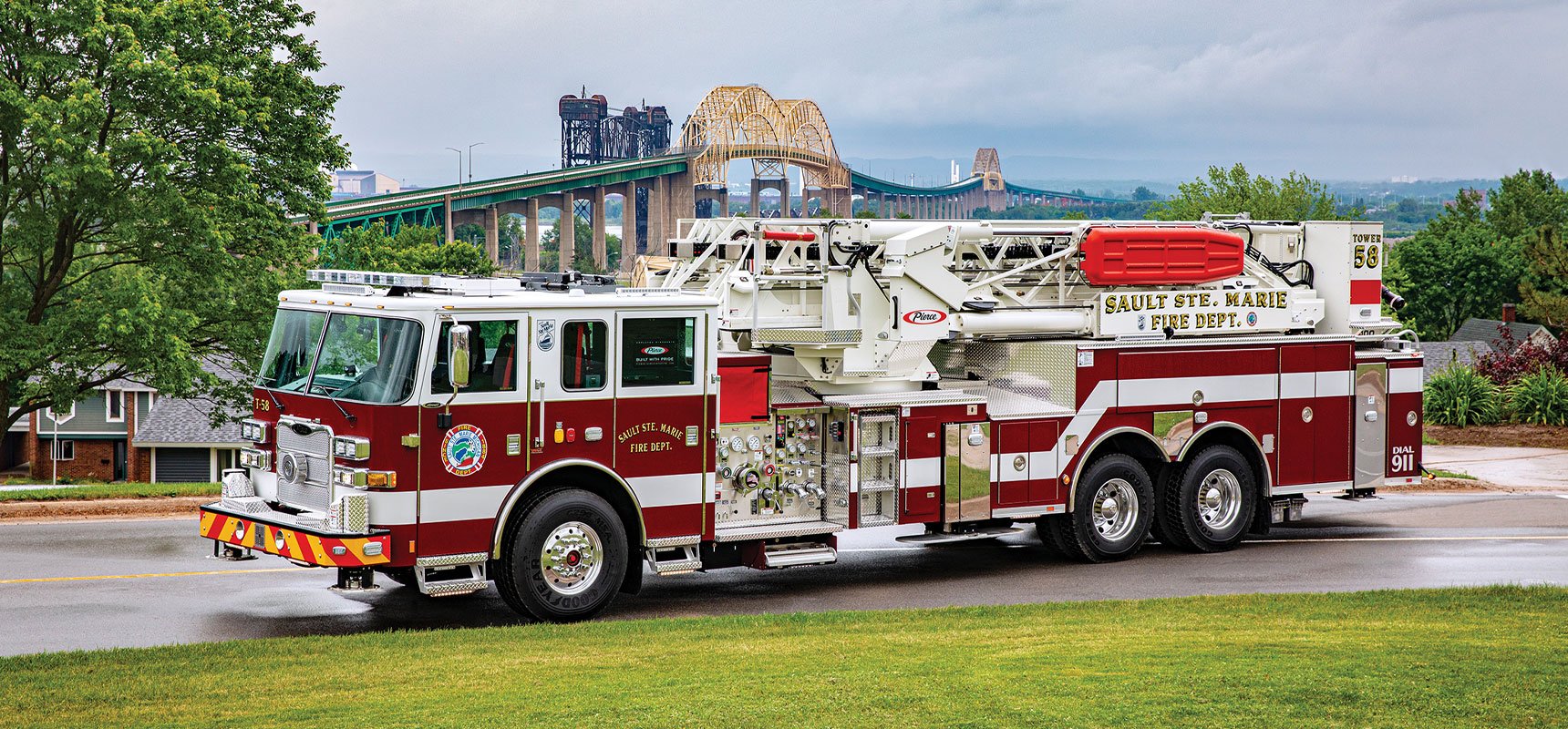
Urban firefighting presents many unique challenges for first responders. From highrise and multi-occupancy buildings, historical firehouses, narrow streets, and alleys, to proximity to highway systems, industrial parks and airports, urban fire departments have a lot of varying responsibilities.
As fire departments consider the right apparatus for urban firefighting, what are some design and configuration considerations? Below, we outline some key factors fire department representatives may want to consider.
Common Urban Fire Truck Design Features
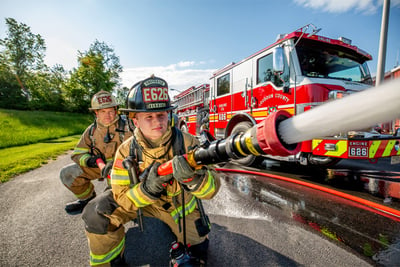
Urban fire departments typically have very high call volume and feature some common design features:
- A comfortable and safe cab. With a high volume of calls, firefighters spend a lot of time in the cab. As such, cabs are often designed to reduce stress on firefighters’ bodies as they travel in the vehicle.
- Vehicle ergonomics. To optimize efficiency, fire trucks are designed for fast and easy entry in and out of the cab.
- Improved suspension systems. When a fire truck is used daily, many fire departments choose to include a high-performance suspension system onboard to ensure firefighters arrive on the scene safely. This helps improve ride quality, apparatus longevity and truck maneuverability. Additionally, a high-quality suspension system protects firefighters and valuable equipment from continuous jostling and bumps.
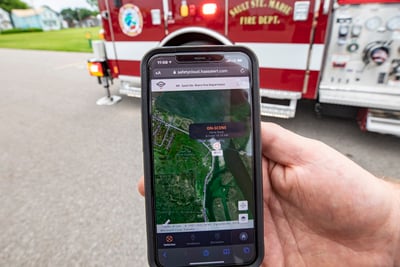 Collision Avoidance. Modern fire trucks are designed with collision avoidance technology, like HAAS Alert, to help ensure these critical vehicles stay in service.
Collision Avoidance. Modern fire trucks are designed with collision avoidance technology, like HAAS Alert, to help ensure these critical vehicles stay in service.- Design based on geography and community needs. Every fire truck should be designed based on the needs of the community it serves. Knowing which configuration works best to support the people, buildings and businesses in the service area improves a department’s ability to respond effectively to all types of emergencies.
- Smart design and configuration. Based on the community’s needs, fire trucks should be configured to optimize timely and efficient response. The types of calls can help dictate how to configure the truck and store critical equipment in easy to access compartments.
- Outfitted to manage emergency medical services (EMS). Urban area fire trucks are almost always prepared to manage EMS calls.
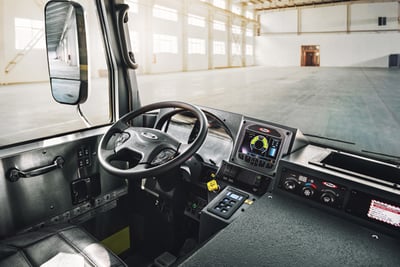 Include an easy-to-clean interior. Spending a lot of time in the cab means seats, floors and accessories may get dirty quickly. As a result, urban fire trucks are often constructed with easy-to-clean interior surfaces.
Include an easy-to-clean interior. Spending a lot of time in the cab means seats, floors and accessories may get dirty quickly. As a result, urban fire trucks are often constructed with easy-to-clean interior surfaces.- Low and easy access to critical equipment. Urban fire trucks are often equipped with critical equipment in low and readily accessible areas. Hosebeds and crosslays are often low, so firefighters don’t have to climb for access. Ladder access is optimized and rear outlets are often low and pre-connected for easy hook-ups.
In a large urban center, for example, fire stations positioned near an interstate may run more accident calls with a larger, more heavily equipped squad fire truck, while stations in the heart of the city may run more EMS from a smaller, more maneuverable fire engine. The mission of the truck drives the type of truck required and the tools and equipment on board.
Let’s compare two urban environments to see how each truck is designed to match the community's needs.
A Comparison of Fire Departments and Apparatus in Two Urban Centers
Fire departments represent communities large and small, and even urban areas themselves can look a lot different from city to city and state to state. Below, we review small and large urban centers to understand how the trucks in the fleet are constructed to support each unique urban area.
Small Urban Centers
A small urban center may include some of the following characteristics:
- More modern buildings.
- Larger firehouses.
- Wider streets and more suburban areas.
- Large highway systems near the urban center.
- Airports and other industrial parks close to the urban center.
- Wildland urban interface areas.
With this in mind, many fire departments in smaller urban centers strategically outfit trucks to match the unique needs of these communities, including fleets that are:
- EMS and rescue ready. Smaller urban fire departments serving busy areas are often equipped for all types of EMS and rescue response emergencies.
- Larger in size, equipped to manage all types of calls. When fire departments serve the city center as well as industrial areas, larger fire trucks are often ideal because they can carry more equipment and be ready for any type of call, including fire suppression, aerial rescue, vehicle stabilization and more.
Small Urban Center: Appleton Fire Department
The Appleton Fire Department serves a community of nearly 75,000 people in Appleton, Wisconsin. With six fire stations strategically located throughout the City of Appleton, the department provides many essential services including fire suppression, a full range of fire prevention, life safety education, emergency medical first responder and rescue response. In addition, the fire department provides mutual aid assistance with most of the surrounding municipalities in the Fox River Valley area.
Appleton Fire Department – Pumper
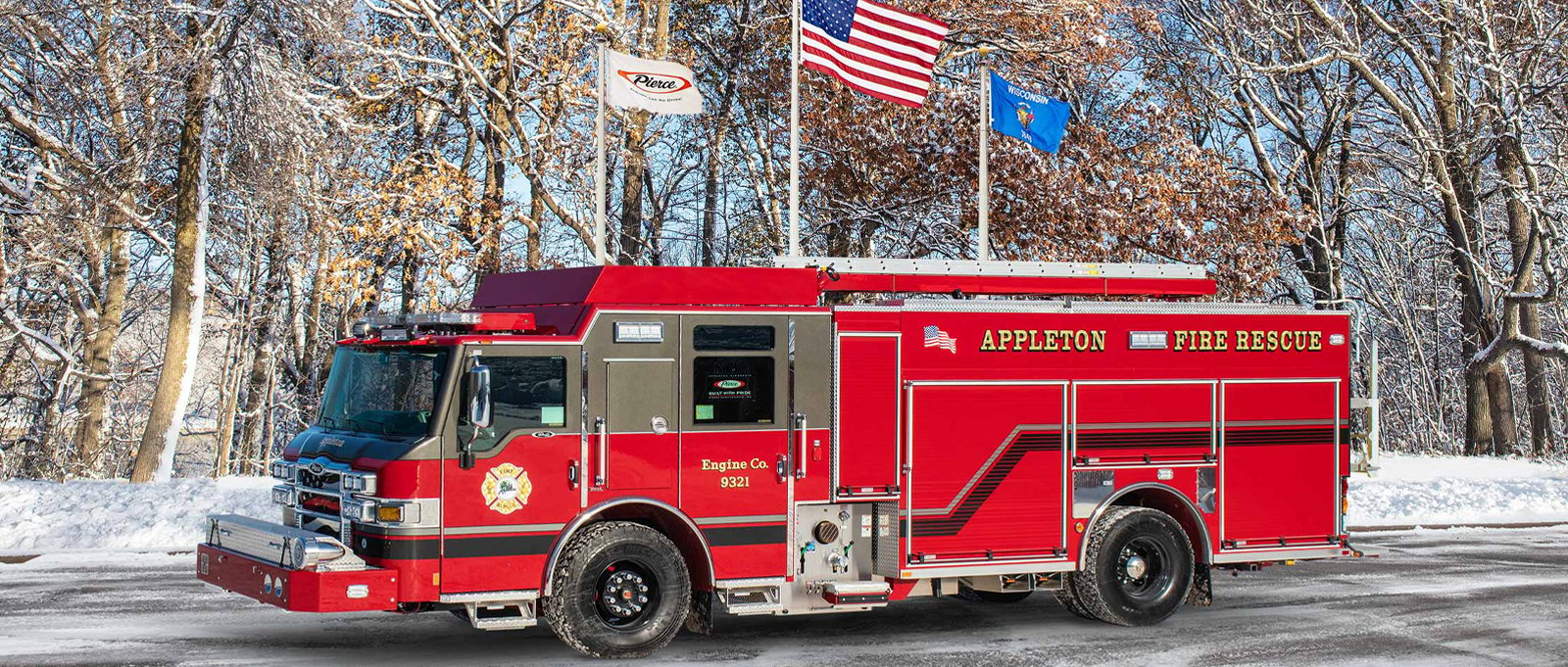
Appleton’s pumper fire truck is built on a Velocity® chassis with a 535-gallon water tank, including both foam and water capabilities. This provides versatility to manage smaller emergencies and larger interstate and industrial fires that may require foam. The truck also features a Pierce Manufacturing’s TAK-4® Independent Front Suspension for excellent maneuverability and stability in urban areas. The overall height is 11’ 5”.
View this truck in more detail.
Appleton Fire Department – Aerial
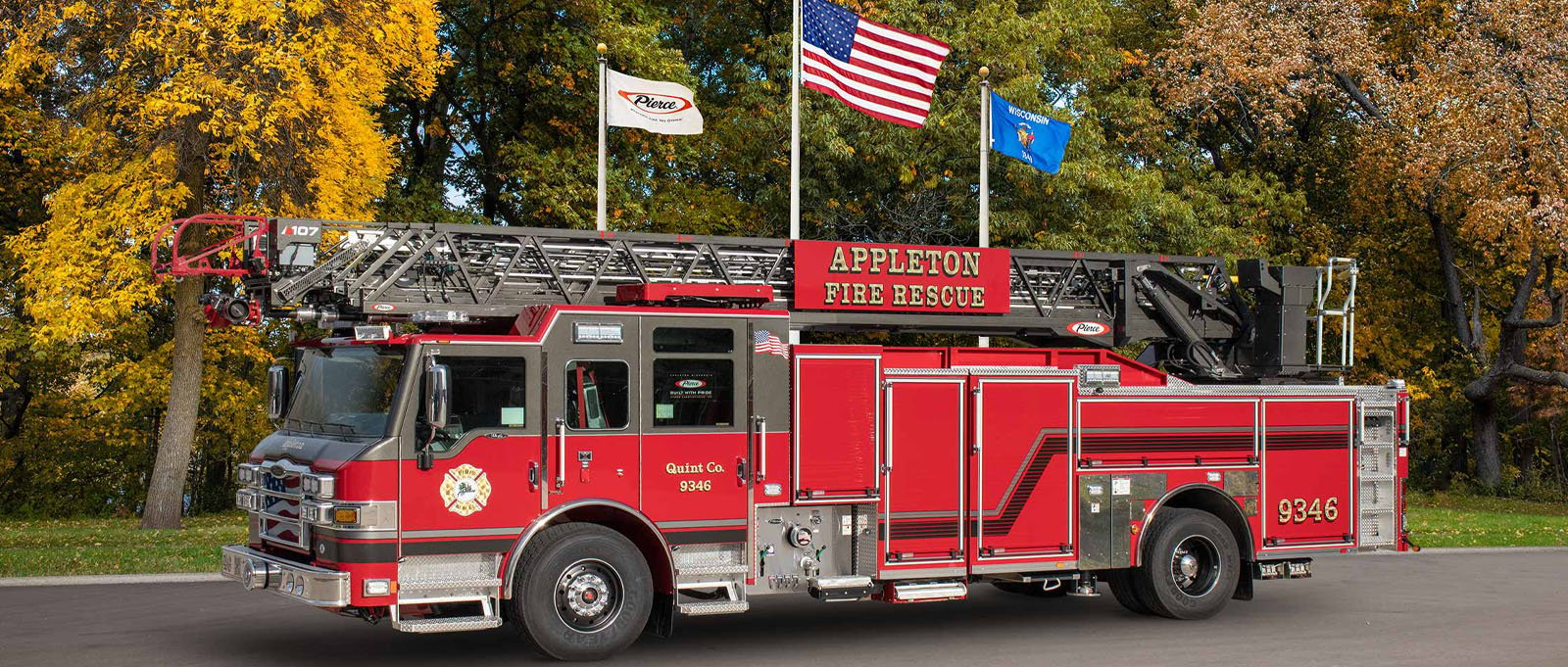
The Appleton Fire Department Ascendant® 107’ Heavy-Duty Aerial Ladder is also on a Velocity® chassis with TAK-4® Independent Front Suspension, has a 500-gallon water tank with foam capabilities. This truck is designed to provide aerial support in addition to fire suppression and foam support. The truck's overall height is 11’ 9”.
View this truck in more detail.
Large Urban Centers
A large urban center may include some of the following characteristics:
- Older, more historic buildings.
- New, modern high-rise buildings.
- Cramped city centers with narrow streets, alleys and intersections.
- Smaller, historic firehouses with height, width and length restrictions for fire apparatus.
- Vastly different response areas with unique structural and emergency requirements.
- New urban planning initiatives, including large pedestrian sidewalks and bike lanes, which present emergency response challenges.
- Smaller, more maneuverable fire trucks. In densely populated cities, fire trucks tend to be smaller and more agile to traverse narrow streets and alleys successfully. A smaller apparatus can successfully support high call volumes and EMS support with strategic compartmentation.
- Specialized trucks for each unique urban service area. In a larger urban center, you’ll often find fire apparatus that cater to the unique needs of a very specific service area. For example, a truck serving the downtown core may feature an aerial device, a shorter wheelbase and a shorter overall length for easy maneuverability on narrow streets. On the other hand, a truck providing support near an interstate may be larger in size and feature foam capabilities, vehicle extrication equipment and full EMS and rescue support.
- Clear sightlines and optimal cab visibility. With a lot of traffic to navigate, fire trucks in large urban centers are often designed to offer clear sightlines in and around the cab, large wrap-around windshields and dashes, and open cab areas for greater visibility.
- Low access to equipment. Fire trucks are designed to support fast and effective on-scene response, including low crosslays and high-rise packs that are easy to access and remove.
- Two-stage water pumps. In large cities, pumpers equipped with two-stage water pumps can improve water pressure and water flow in fire suppression efforts for multistory buildings. The first stage of the pump provides normal pump volumes, but the second stage can pump up to 700 PSI, offering an elevated water pressure to reach higher areas in high-rise buildings.
Baltimore City Fire Department
The Baltimore City Fire Department responds to 235,000 calls for service per year, serving a geographic area of 92 square miles with a daytime population exceeding 1,000,000 people. The department provides the City of Baltimore with emergency medical services, fire suppression, basic and technical rescue, disaster response, hazardous materials mitigation and marine fire rescue.
Baltimore City Fire Department - Engine
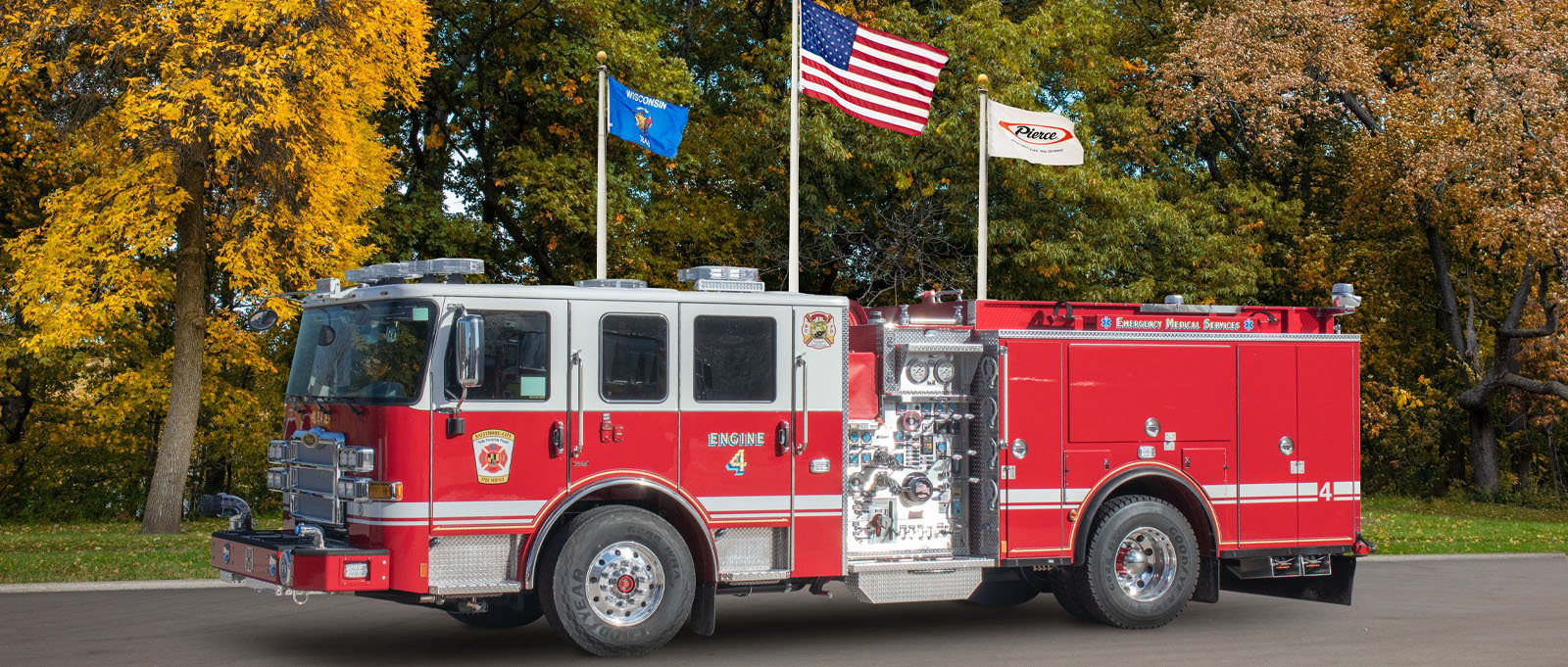
The Baltimore City fire engine is built on an Enforcer™ chassis and features a 500-gallon water tank pumping 1500 GPM, and side and front roll protection. The overall length is 32’ and the overall vehicle height is 9’10”. This engine is designed to optimize water pumping and carrying capabilities with additional fire suppression equipment on board.
View this truck in more detail.
Baltimore City Fire Department – Aerial
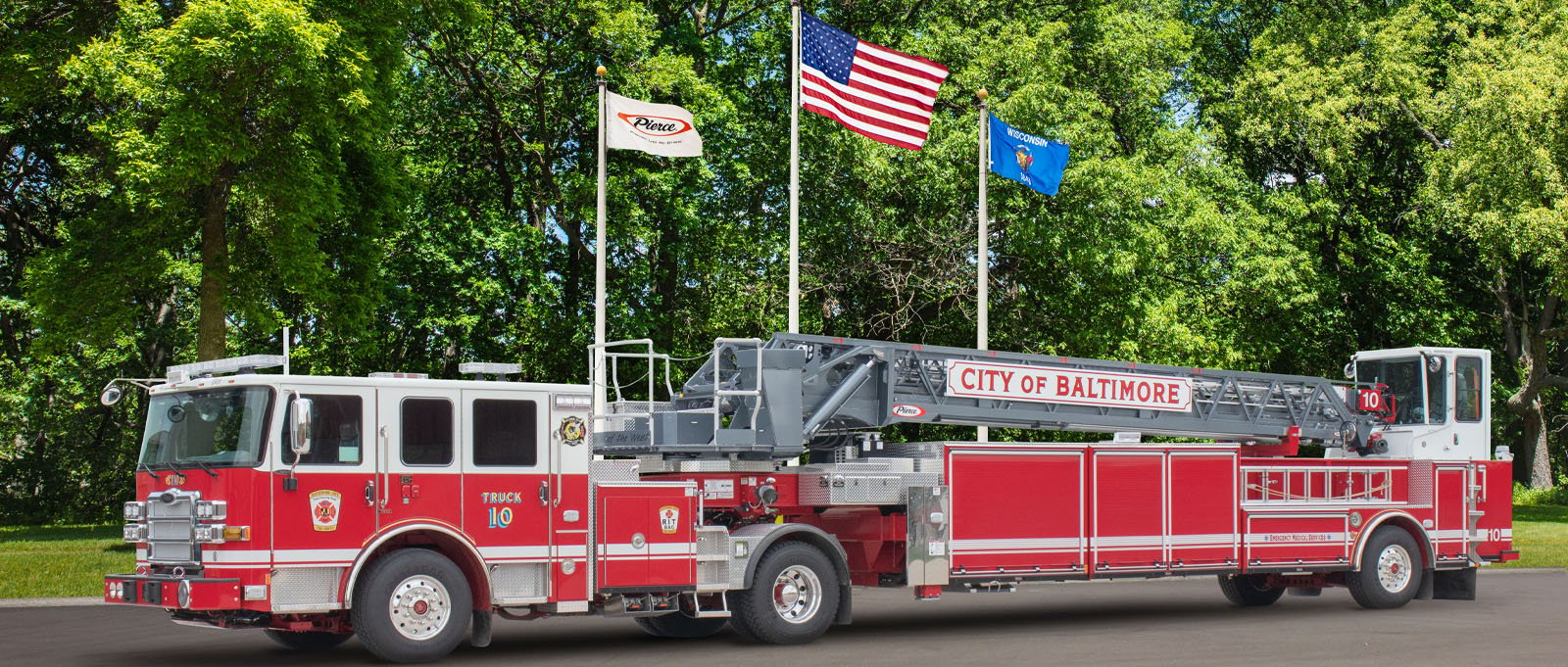
Baltimore City’s Ascendant® 107’ Heavy-Duty Tiller Aerial Ladder is built on an Enforcer™ chassis. The tiller includes TAK-4® Independent Front Suspension and Command Zone™. This apparatus is designed for maximum maneuverability and storage capabilities. The overall height of the vehicle is 11’2”.
View this truck in more detail.
Finding the Right Fire Truck for Your Urban Fire Department
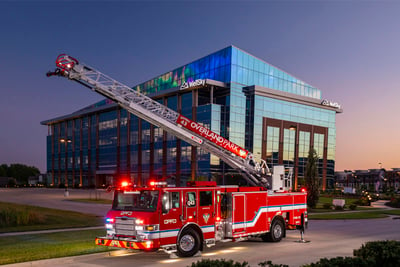 Every urban fire truck should be configured to match the unique needs of the fire department and the community it serves. Keep these considerations in mind when selecting and designing a new apparatus:
Every urban fire truck should be configured to match the unique needs of the fire department and the community it serves. Keep these considerations in mind when selecting and designing a new apparatus:
- What key features are you looking for in your new urban apparatus? Consider the main tasks of the truck.
- Where will this fire truck be located in the urban area? This may determine the truck type and some of the optional features to include on board.
- What is your budget? This can help determine the right place to start in your urban fire truck search.
- What regional laws and other restrictions do you need to review? Consider things like bridge heights, road widths and station bay size.
- What type of aftermarket support do you require? Working with a fire truck manufacturer with robust aftermarket support services is critical for urban departments with high call volume.
What unique factors have you seen on an urban fire truck? We’d love to hear your thoughts in the comments!